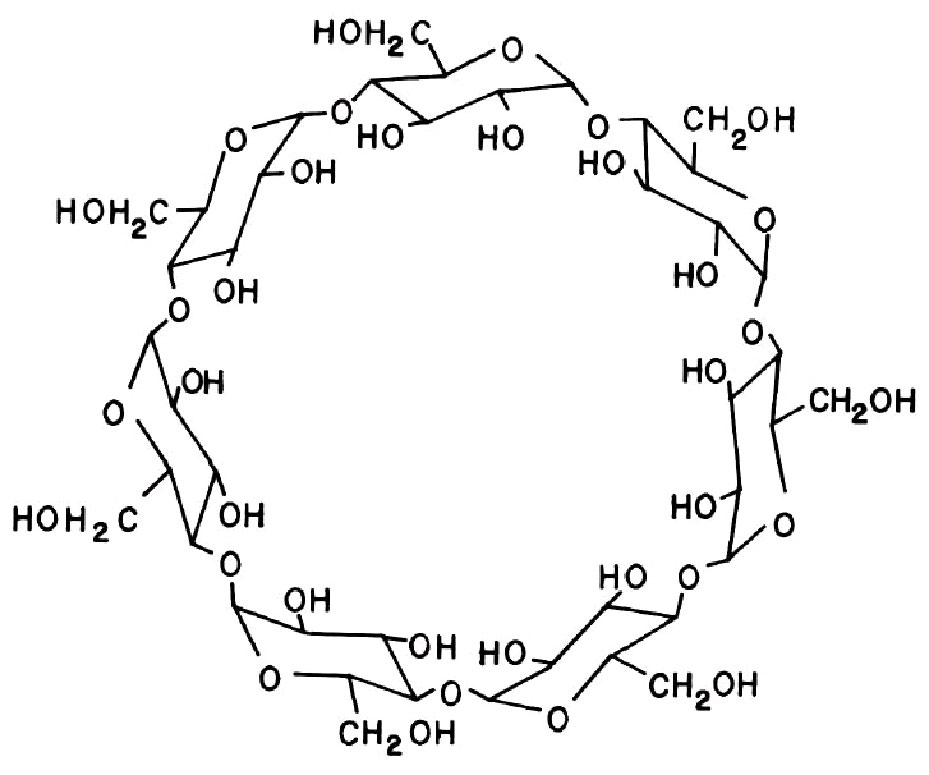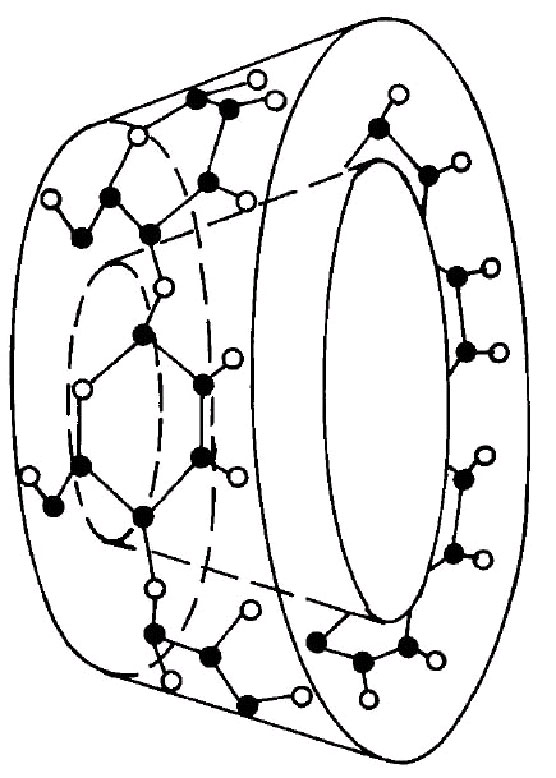CoQ10sr Patented Delivery System Doubles CoQ10 Blood Levels
Coenzyme Q10 (CoQ10) is a naturally produced substance found in every cell in the body and a popular dietary supplement with enormous therapeutic and anti-aging potential. It is an essential cofactor in mitochondrial energy production, a potent antioxidant, and an effective agent in supporting cardiovascular health. There are dozens of commercially available CoQ10 products for consumers to pick from, but due to the chemical nature of the unmodified CoQ10 molecule and its relative lack of absorption by the body after oral supplementation, many of these formulations do not result in the necessary blood levels of CoQ10 to support an array of essential cellular processes and counteract the age-related progressive decline of this critical nutrient. The good news is, a new product called CoQ10sr, containing a patented CoQ10 delivery system, has been shown to increase absorption more effectively than many other formulations on the market, doubling plasma CoQ10 levels in less than a month. Please read further to find out more about this breakthrough product, which is now available from IAS.
Bioavailability Challenges of CoQ10
No matter how great its therapeutic potential, the efficacy of a dietary supplement or drug depends to a large extent on its degree of absorption and assimilation by the body. To be pharmacologically active, a substance must be at least moderately soluble in water (i.e., the substance must be hydrophilic or “water-loving”) to transport it in an aqueous medium to the absorption surface of the gastrointestinal (GI) tract where it can then permeate biological membranes and exert its effect. (1) CoQ10, however, is a lipophilic (“fat-loving”) molecule and insoluble in water. (2,3) (Familiar examples of lipophilic substances are vegetable oils, nut butters, waxes, etc., which do not dissolve in water.) Even though it is naturally synthesized in the body’s cells, orally-administered CoQ10 has long been known to be problematic, resulting in low bioavailability (2,3) due to water insolubility. (Bioavailability is the degree to which a drug or substance becomes available to the target tissue(s) after administration.) In fact, there are many examples of promising lipophilic drugs and natural substances that, due to water-insolubility, cannot be distributed efficiently throughout the GI tract, leading to low absorption by the body and impaired efficacy. (1,2) What further complicates matters is that CoQ10 is a relatively large molecule, which also contributes to its poor absorption from the GI tract. (3)
In order to counteract the bioavailability challenges of orally administered CoQ10, researchers have investigated many types of delivery systems to boost its absorption, including nanoparticles (reduction of particle size), oil emulsions (lipid microspheres), dry emulsions, etc. (2,3) In particular, one very effective method to enhance CoQ10 uptake is by increasing its solubility in water by complexation with cellulose derivatives known as cyclodextrins.
Cyclodextrins: Unique Delivery Systems that Increase CoQ10’s Bioavailability
Cyclodextrins are a group of structurally related natural products formed during the bacterial digestion of cellulose. They are ring structures consisting of several simple sugars linked together, and classified as α, β, or γ, depending on whether they contain six, seven or eight sugar units, respectively (see Figure 1).
figure 1 – The Chemical Structure of Cyclodextrin

Cyclodextrin molecules are not flat or perfectly cylindrical, but due to the nature of their chemical bonds, form large truncated cone-like structures with a hydrophilic outer surface and a lipophilic central cavity ─ this unique configuration is key to their usefulness as drug delivery systems (see Figure, 2).
figure 2 – The Conical Shape of Cyclodextrin

Figure: The chemical structure (1) and the conical shape (2) of the β-cyclodextrin molecule. The CoQ10 molecule fits into the center cavity of the cyclodextrin molecule, forming an inclusion complex.
Figure reference: Loftsson T, Brewster ME. Pharmaceutical applications of cyclodextrins. Drug solubilization and stabilization. J. Pharm. Sci. 1996; 85:1017-1025.
As a result of their structure and shape, cyclodextrins act as molecular “containers” or “cages” by enveloping suitably sized lipophilic molecules in their internal cavity and surrounding them in a “water-loving” hydrophilic shell. The result is the formation of water-soluble “inclusion complexes,” an elegant solution to increasing the aqueous solubility ─ and the bioavailability ─ of lipophilic drugs and compounds. (1,3,4) In the pharmaceutical industry, cyclodextrins have frequently been used for this purpose, and dozens of cyclodextrin-complexed drugs are on the market worldwide. With regard to CoQ10, studies show that inclusion complexes formed with different types of cyclodextrins, especially β-cyclodextrin, significantly increases its water solubility and therefore its bioavailability. (2,3)
MicroActive® CoQ10 Demonstrates Superior Absorption versus Other Formulations
The active ingredient in CoQ10sr, MicroActive® CoQ10 (manufactured by Bioactives LLC), is a patented inclusion complex of β-cyclodextrin and CoQ10 that dramatically increases blood CoQ10 levels. In a 2010 study published in Integrative Medicine – a Clinician’s Journal, the bioavailability of MicroActive® CoQ10 in hard gelatin capsules was compared with crystalline CoQ10 (also in hard gelatin capsules) and oil-solubilized CoQ10 softgels containing an absorption enhancer. In a 24-hour single-dose crossover study in which five people were administered 180 mg of each of the formulations, MicroActive® CoQ10 exhibited a sustained release action that was almost four times better absorbed than the crystalline form and more uniformly absorbed than the solubilized softgels, in which bioavailability varied among the subjects. (5) The researchers also performed a longer 21-day bioavailability study comparing 60 of mg MicroActive® CoQ10 with the same dose of the oil-solubilized form in 22 people (11 per group). After 21 days of supplementation, everyone in the MicroActive® CoQ10 group showed at least a doubling in plasma CoQ10 levels, indicating a 100% response rate. In contrast, only 44% of people in the oil-solubilized group doubled their plasma CoQ10 levels (a 44% response rate). Researchers concluded that MicroActive® CoQ10 is more “universally bioavailable [uniformly absorbed by everyone], improving its ability to deliver maintenance and therapeutic doses of CoQ10.” (5)
Graphs illustrating these results can be viewed on the CoQ10sr product information page here
Why Do We Need to Ensure Adequate CoQ10 Blood Levels?
As mentioned earlier, CoQ10 is a necessary cofactor in cells’ mitochondria for the conversion of energy from carbohydrates and fatty acids to the universal energy currency, ATP (2,3) and the highest concentrations are found in tissues with high energy demand such as the heart, (6,7) brain (8,9) and kidneys. (10) In addition, CoQ10 is a potent free radical scavenger, blocking oxidative damage of DNA, lipids and proteins. (2,3) CoQ10 is used therapeutically in the treatment of cardiovascular disorders including angina, hypertension and congestive heart failure, (2,3,6,7) as well as in neurodegenerative disorders, such as Parkinson’s disease, (2,6) and is beneficial in many other conditions as well. Because of its key physiological roles including energy production and antioxidant action, it is vital to maintain optimal levels of CoQ10; its production declines progressively with age, and deficiencies increase the risk of degenerative diseases (11-14) and accelerated aging (15). (The use of statin drugs is also known to lower blood levels of this critical nutrient.) Equally, or even more compelling to anti-aging enthusiasts, is that research demonstrates that CoQ10 supplementation in animals and other organisms extends life span. (16-17)
Now, with the novel MicroActive® patented delivery system contained in CoQ10sr, you can ensure the full spectrum of health benefits provided by higher and sustained CoQ10 blood levels. Make highly bioavailable CoQ10sr the latest addition to your arsenal of antiaging supplements.
References
1. Rasheed A, Kumar A, Sravanthi V. Cyclodextrins as drug carrier molecule: a review. SciPharm. 2008;76:567-598.
2. Zmitek J, Zmitek K, Pravst I. Improving the bioavailability of Coenzyme Q10: from theory to practice. AgroFood Industry Hi-Tech. 2008;19(4):8-10.
3. Fir MM, Smidovnik A, Milivojevic L, Zmitek J, Prosek M. Studies of CoQ10 and cyclodextrin complexes: solubility, thermo- and photo-stability. J Incl Phenom Macrocycl Chem. 2009;64:225–232.
4. Kumar A, Ahuja A, Ali J, Baboota S. Conundrum and therapeutic potential of curcumin in drug delivery. Crit Rev Ther Drug Carrier Syst. 2010;27(4):279-312.
5. Kagan D, Doddabele M. A study on the bioavailability of a novel sustained-release Coenzyme Q10-β-cyclodextrin complex. Integrative Medicine – A Clinician’s Journal. 2010; 9(1):20-24.
6. Dhanasekaran M, Ren J. The emerging role of coenzyme Q-10 in aging, neurodegeneration, cardiovascular disease, cancer and diabetes mellitus. Curr Neurovasc Res. 2005 Dec;2(5):447-59.
7. Rosenfeldt FL, Pepe S, Linnane A, et al. Coenzyme Q10 protects the aging heart against stress: studies in rats, human tissues, and patients. Ann NY Acad Sci. 2002 Apr;959:355-9.
8. Somayajulu M, McCarthy S, Hung M, et al. Role of mitochondria in neuronal cell death induced by oxidative stress; neuroprotection by Coenzyme Q10. Neurobiol Dis. 2005 Apr;18(3):618-27.
9. Matthews RT, Yang L, Browne S, Baik M, Beal MF. Coenzyme Q10 administration increases brain mitochondrial concentrations and exerts neuroprotective effects. Proc Natl Acad Sci USA. 1998 Jul 21;95(15):8892-7.
10. Gazdikova K, Gvozdjakova A, Kucharska J, et al. Effect of coenzyme Q10 in patients with kidney diseases. Cas Lek Cesk. 2001 May 24;140(10):307-310.
11. Ernster L, Forsmark-Andree P. Ubiquinol: an endogenous antioxidant in aerobic organisms. Clin Investig. 1993;71(8 Suppl):S60-5.
12. Passi S, De PO, Puddu P, Littarru GP. Lipophilic antioxidants in human sebum and aging. Free Radic Res. 2002 Apr;36(4):471-7.
13. Siemieniuk E and Skrzydlewska E. Coenzyme Q10: its biosynthesis and biological significance in animal organisms and in humans. Postepy Hig Med Dosw (Online). 2005;59:150-9.
14. Kontush A, Schippling S, Spranger T, Beisiegel U. Plasma ubiquinol-10 as a marker for disease: is the assay worthwhile? Biofactors. 1999;9(2-4):225-9.
15. Lass A, Agarwal S, Sohal RS. Mitochondrial ubiquinone homologues, superoxide radical generation, and longevity in different mammalian species. J Biol Chem. 1997 Aug 1;272(31):19199-204.
16. Quiles JL, Ochoa JJ, Huertas JR, Mataix J. Coenzyme Q supplementation protects from age-related DNA double-strand breaks and increases lifespan in rats fed on a PUFA-rich diet. Exp Gerontol. 2004 Feb;39(2):189-94.
17. Ishii N, Senoo-Matsuda N, Miyake K, et al. Coenzyme Q10 can prolong C. elegans lifespan by lowering oxidative stress. Mech Ageing Dev. 2004 Jan;125(1):41-6.